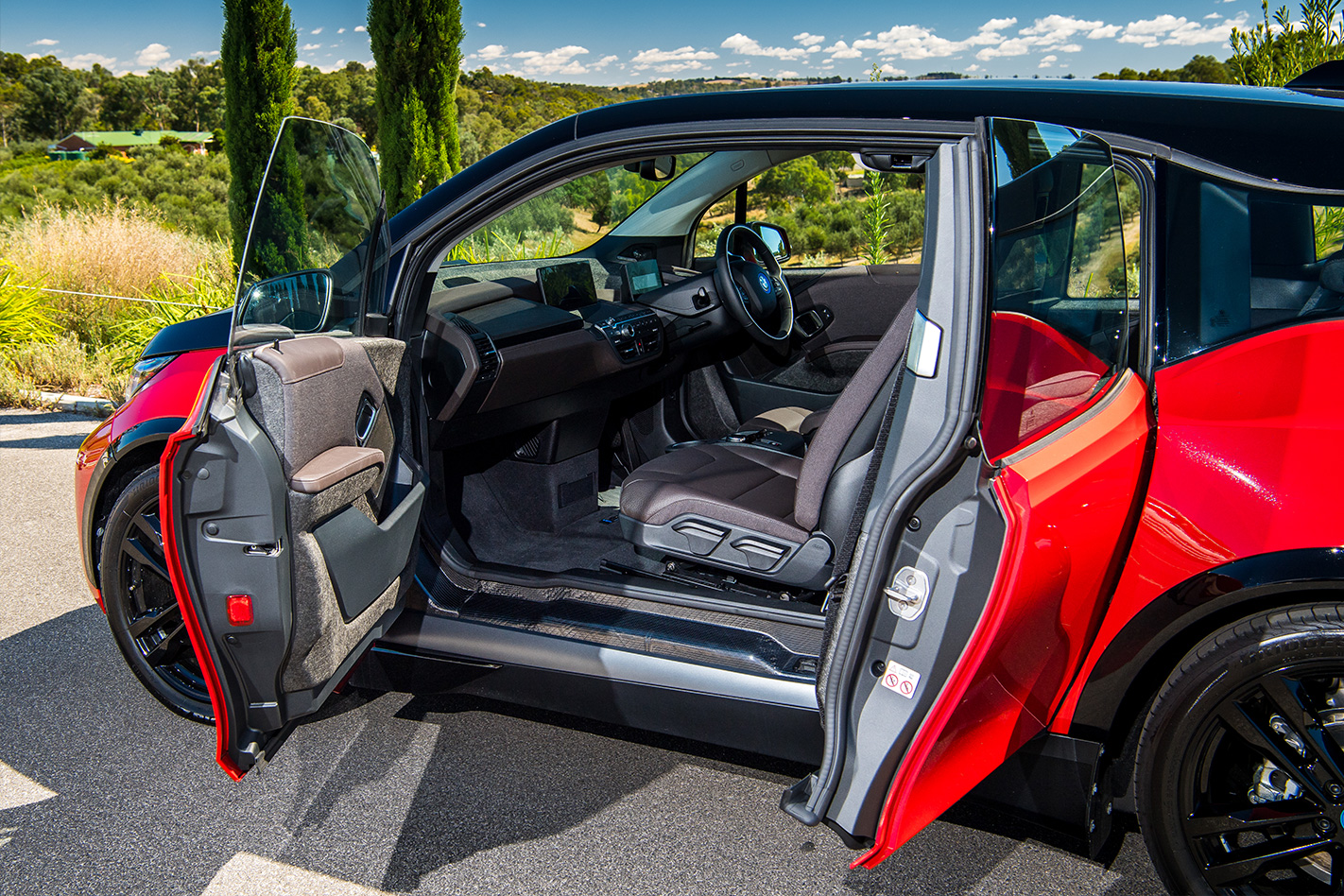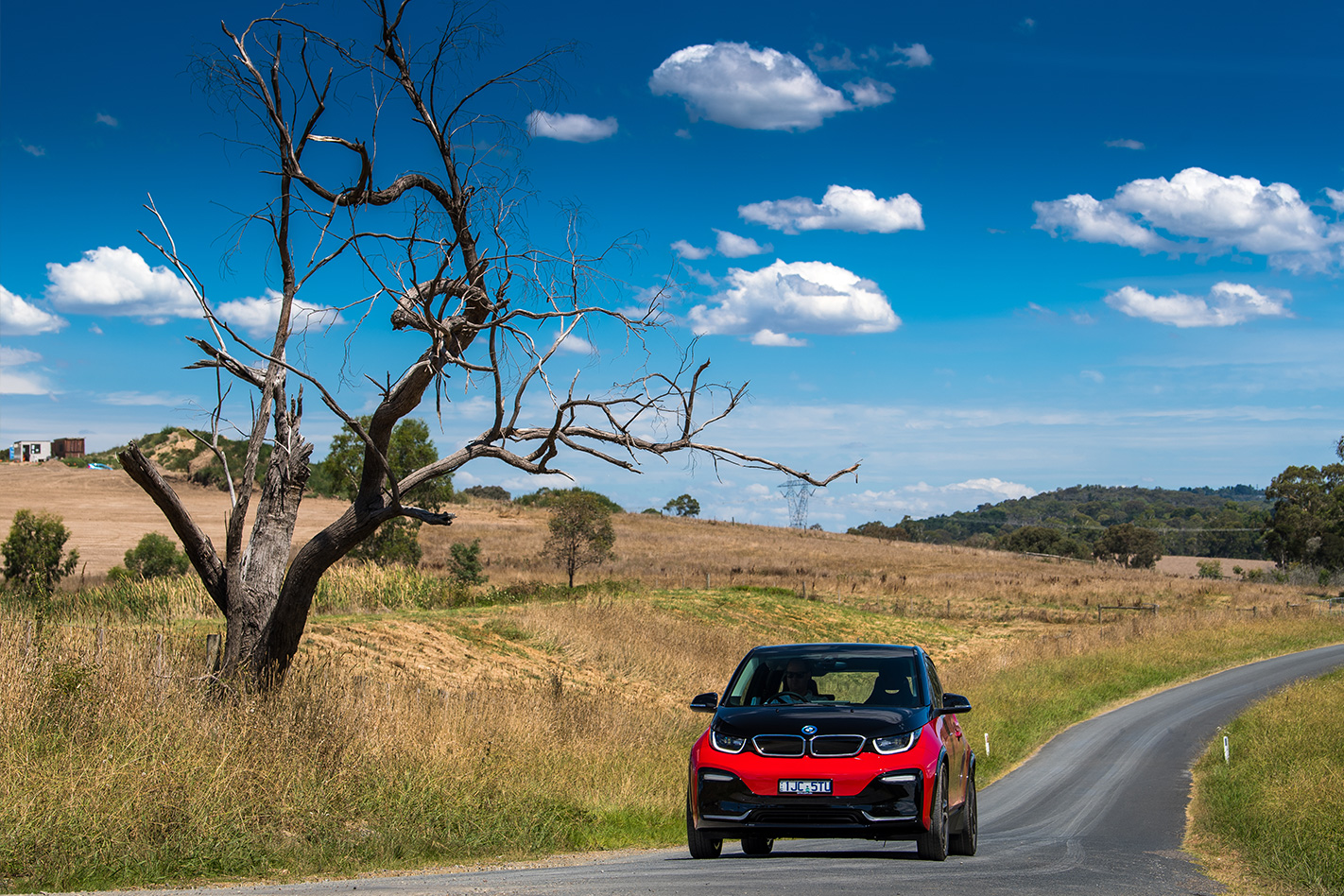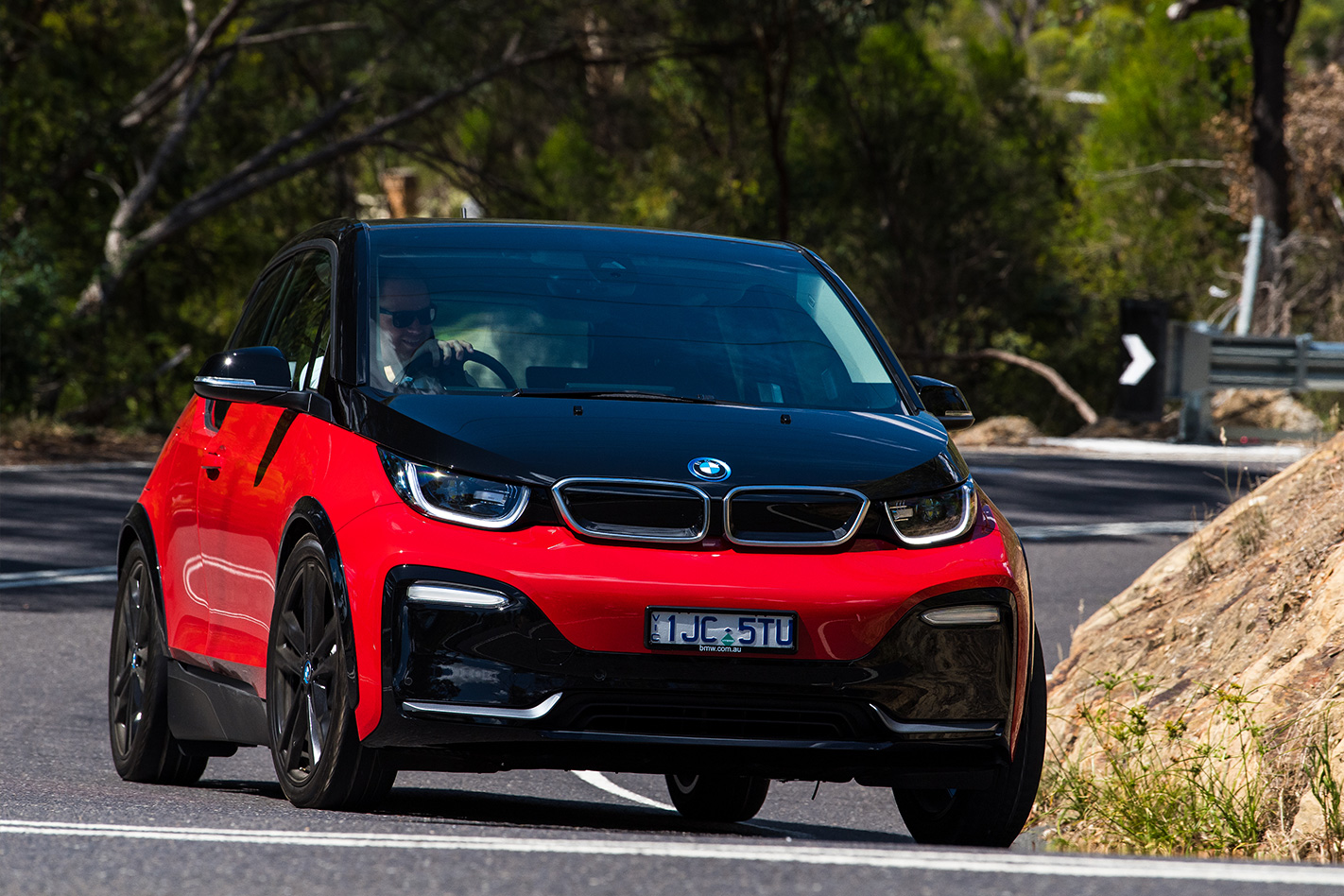A mid-life facelift for the BMW i3 compact electric car adds a more athletic variant to the four-strong line-up.
WHAT IS IT?
A sportier version of BMW’s WCOTY-winning EV that adds power, torque, width, functionality and driver appeal.
WHY WE’RE DRIVING IT
The BMW i3 arrived in Oz in 2014, and other than a battery upgrade in 2016 hasn’t seen much by way of running improvement, until now. The BMW i3S is a decent step on and introduces a ‘driftable’ traction control system that’s on its way into the rest of the BMW line-up.

The Nissan Leaf is the most obvious one, but the old model is no longer available and the new one isn’t yet here. Then there’s the Renault Zoe that’s only available to fleet buyers. Other than budget-stretching Teslas, the BMW i3 is it as far as pure EVs are concerned.
THE WHEELS VERDICT
BMW’s sharpened i3S is even livelier than the already engaging i3 and it looks better, too, which makes the relatively meagre $1200 price premium over the regular car easy to swallow. But the i3 is starting to show its age in areas such as active safety, so the circa-$70K price tag is becoming harder to reason with even though the i3S admirably upholds the fun-to-drive, eco-friendly credentials.

THE WHEELS REVIEW
HOW’S this for a reality check. Right now, private buyers in Australia shopping for an electric car (that isn’t a $100K+ Tesla) have just one choice: the BMW i3. While the rest of the industry tramples over itself to blow more smoke about future EVs, the pioneering i3 is getting on with it, and has been since 2014.
In 2016 a 94Ah/33kWh battery upgrade boosted the WCOTY-winning EV’s range, and now this mid-life facelift introduces a sportier variant called the i3S in battery electric (BEV) and range-extender (REX) formats at a $1200 premium over the regular i3 models.

A new Sport mode sharpens throttle and steering sensitivity in what was already an alert and agile car. A passive sports suspension is standard, lowering the i3S by 10mm using model-specific springs, dampers and anti-roll bars. The ride is firm and sends thumps through the carbonfibre body even at low speeds, but the pay-off is an i3 that’s raring to change direction on tyres that are 20mm wider and run on inch-larger wheels.

Inside is where the eco difference is emphasised. A wider, higher-resolution 10.25-inch screen ‘floats’ above the sculpted dashboard displaying BMW’s latest iDrive 6 infotainment system. Sadly at this price, the i3S misses out on some active safety tech such automatic emergency braking and lane departure warning. Distinguishing the i3S in traffic are revised front and rear bumpers, fully LED lighting and bodywork that’s 40mm wider to fit over the car’s broadened track.

Vincent van Gogh died having sold just one painting, and though BMW has clearly sold more than one i3, there’s still a chance the fun-loving talent of this electric city car won’t gain the widespread recognition its owed until it’s no longer in showrooms and battery-powered driverless pods dominate the landscape. It’s a great car, and that would be a real shame.

Model: BMW i3S BEV Engine: Electric motor Max power: 135kW @ 4800rpm Max torque: 270Nm @ 0rpm Transmission: Single-speed auto Kerb weight: 1265kg Fuel economy: 0.0L/100km 0-100km/h: 6.9sec (claimed) Price: $69,900 On sale: Now





